
Section A Introduction to Jerusalem
Chapter 3 - Modern Jerusalem’s Old City
Christian Quarter
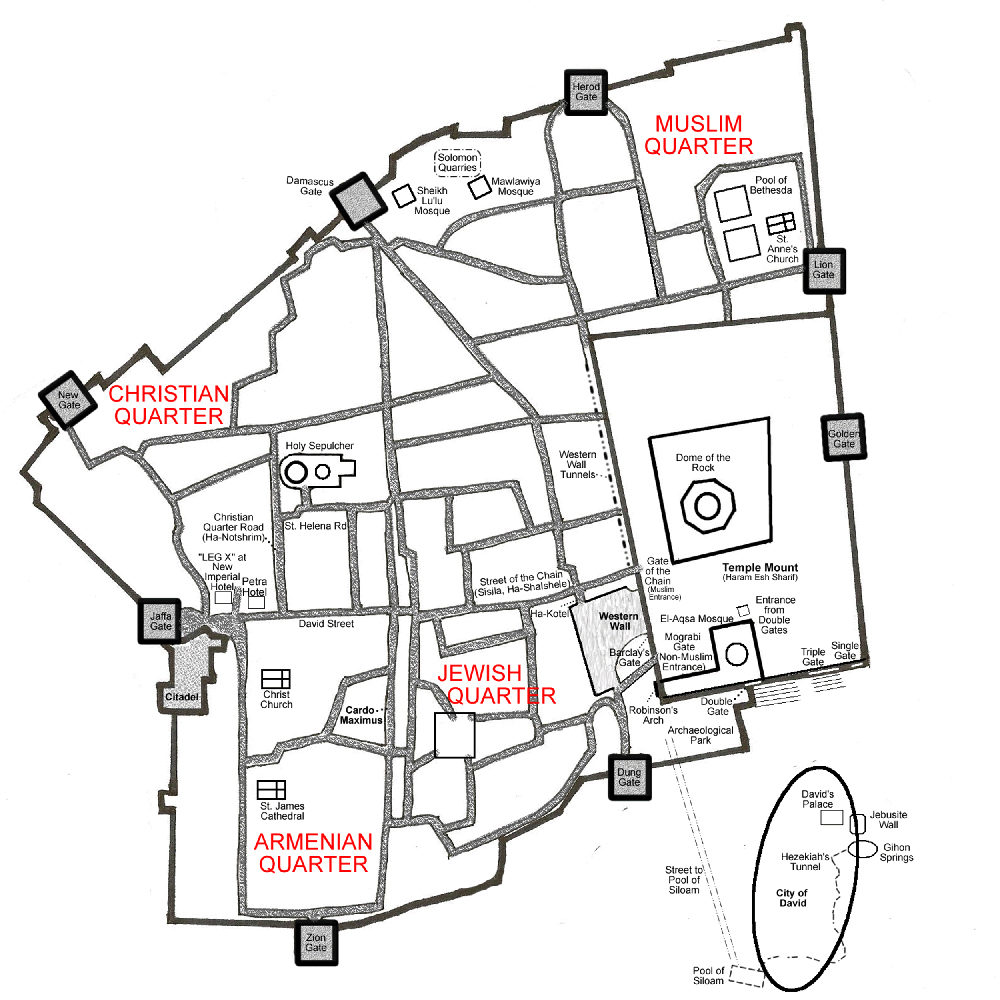
The Old City and its walls, quarters, streets and sites todays.
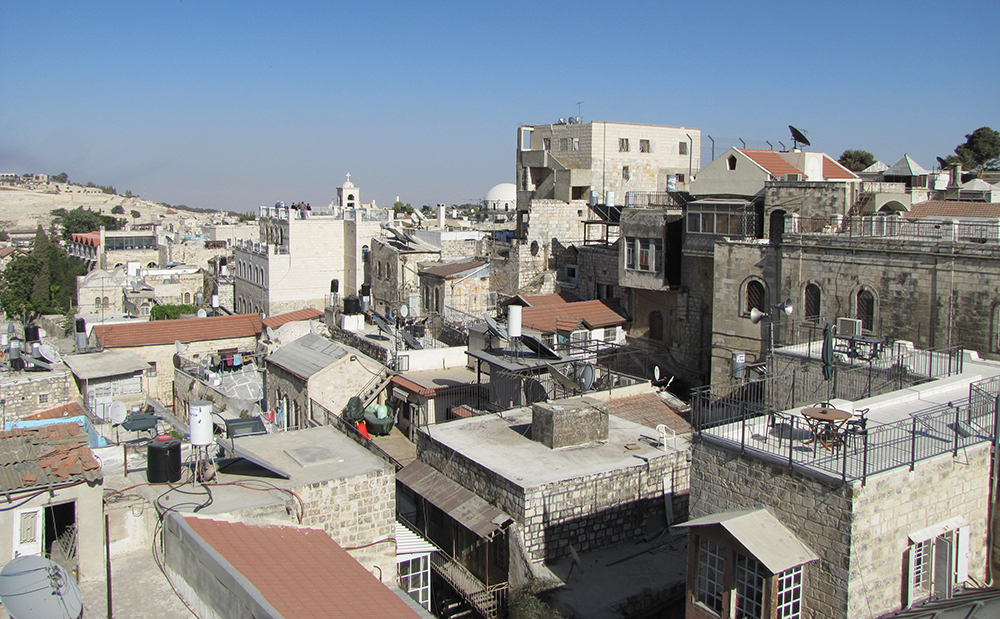
A view of the Christian Quarter from the roof of the Petra Hotel.
The Christian Quarter is the most visited quarter of the Old City because it includes the site of Jesus’ death, burial and resurrection—the Church of the Holy Sepulcher. This quarter is cluttered with a seemingly endless cluster of churches and holy sites whose roofs, domes and facades are built so close together that they are undistinguishable. The streets are filled with narrow storefronts leading into shops that continue in long narrow paths to the back. The market streets are noisy with modern pilgrims and shopkeepers trying to lure them into their stores.
Jewish Quarter
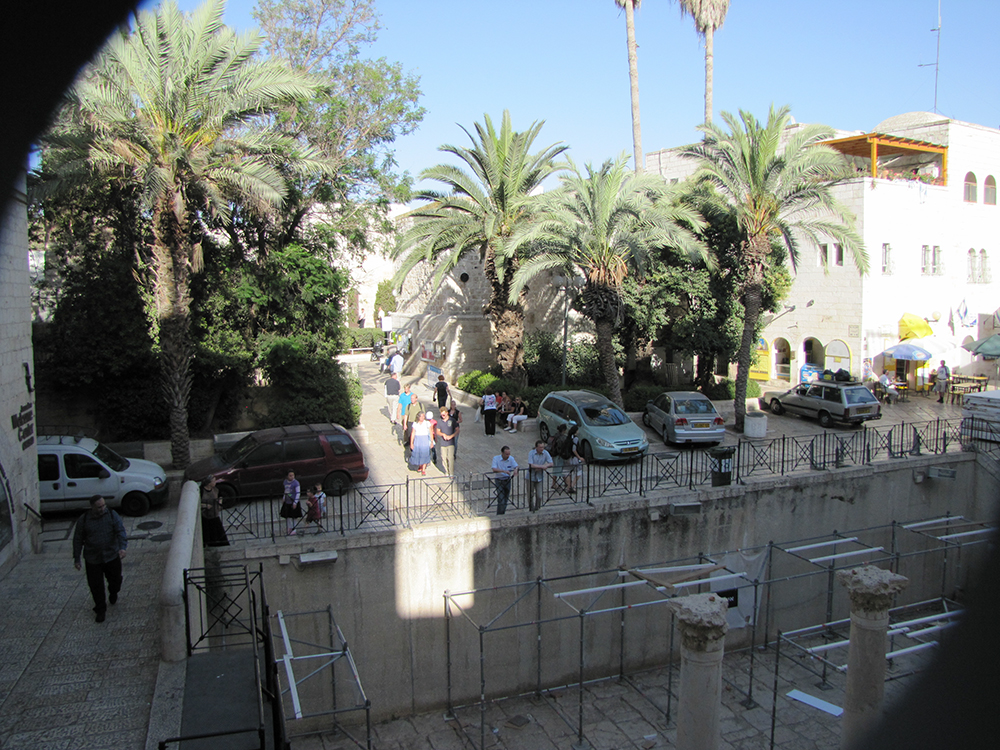
A view of the Jewish Quarter’s new buildings and landscaping that sits above the excavated Cardo Street of the ancient Romans.
The Jewish Quarter is a thriving modern community with more than 1,000 families. It has been rebuilt out of the rubble that was left from Jordanian occupation of the area from 1948 until the Six Day War of 1967. Since the destruction was severe, the Jews who returned to the Old City in 1967 excavated the quarter’s archaeological remains first and then built their city over, around and beside the ancient discoveries.
Today there are numerous synagogues and schools for Jewish studies, along with contemporary shops and restaurants up and down the streets. The ancient Roman Cardo Street (135 AD) with its old Byzantine bazaar (325 AD) has been preserved and is filled with trendy new businesses that sell a wide variety of items, including original art work by local artists.
Muslim Quarter
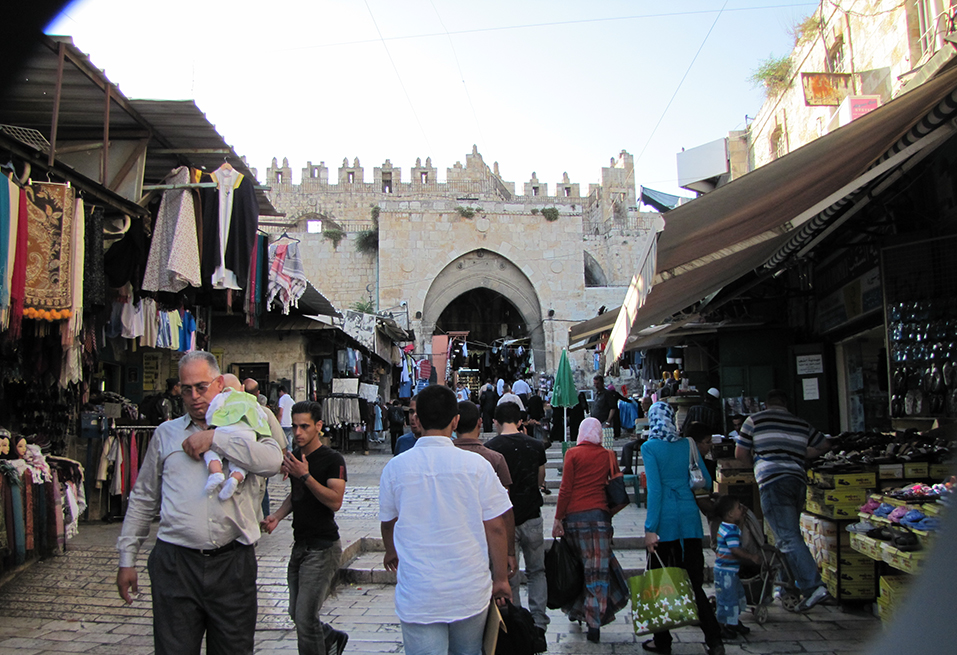
The Bazaar on El-Wad Street just inside the Damascus Gate, which can be seen in the background at the end of the street.
The Muslim Quarter is the largest and most populated of the four quarters in the Old City. Developed by Herod the Great, organized by the Christian Byzantine Empire, and then occupied by the Christian Crusaders, even this section is full of Churches and Christian shrines. The main streets, El-Wad (which leads to the Damascus Gate) and Via Dolorosa (which runs from the Lions Gate to intersect El-Wad), are bazaars with Muslim shopkeepers ready to sell the Christian Pilgrim a plastic crucifix or olive wood nativity set.
When Jesus walked through these streets to his crucifixion they were busy even then and would have been filled with shops. Closer to the Temple Mount (or as the Muslims call it the Hara mesh-Sharif, meaning “The Noble Sanctuary”), buildings from the Mamelukes’ reconstruction of the city from 1250 to 1516 can be seen. This area today preserves some of the fine medieval Islamic architecture.
Armenian Quarter
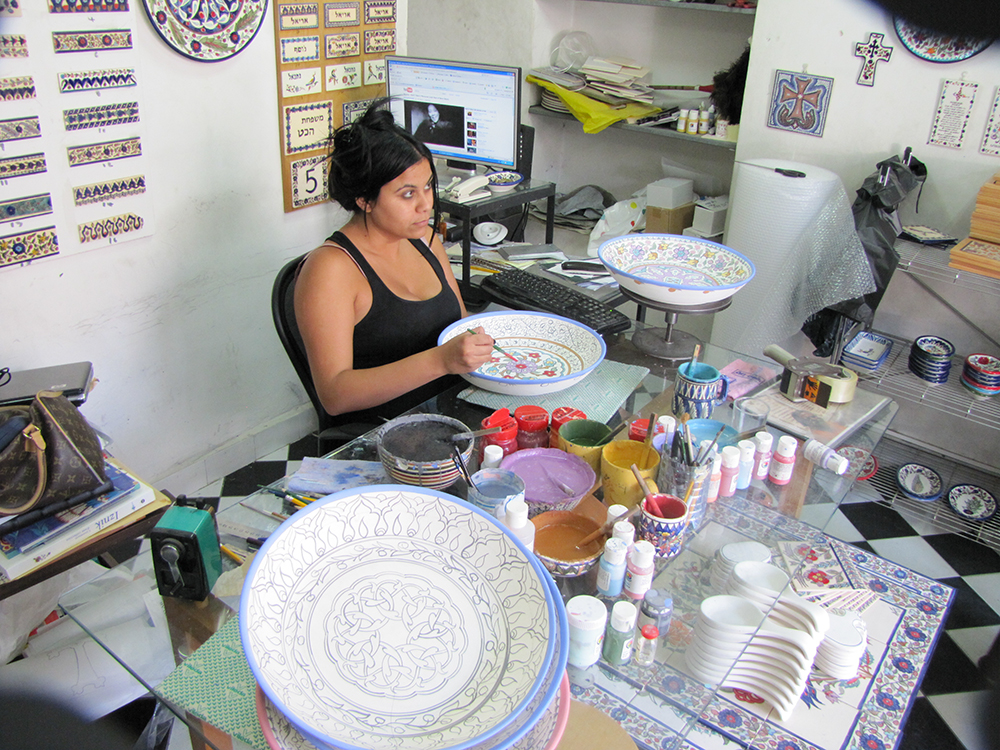
An Armenian woman hand paints the ceramics created in her father's local shop.
The nation of Armenia was the first to declare itself a Christian nation. They did this in 301, even before the days of Constantine, when the Armenian area was established on Mount Zion. Armenians had been living in Jerusalem since 95 BC. Right before the Crusader period (1099-1187 AD) began, the Armenian Quarter started to develop. It reached its current size during the Ottoman period (1517-1917). Today the Armenian “quarter” covers about one-sixth of the Old City.
Although the Armenians are one of the smallest ethnic groups in the city they are proud of their 1700 year old Christian heritage and are friendly, hospitable and fluent in English.
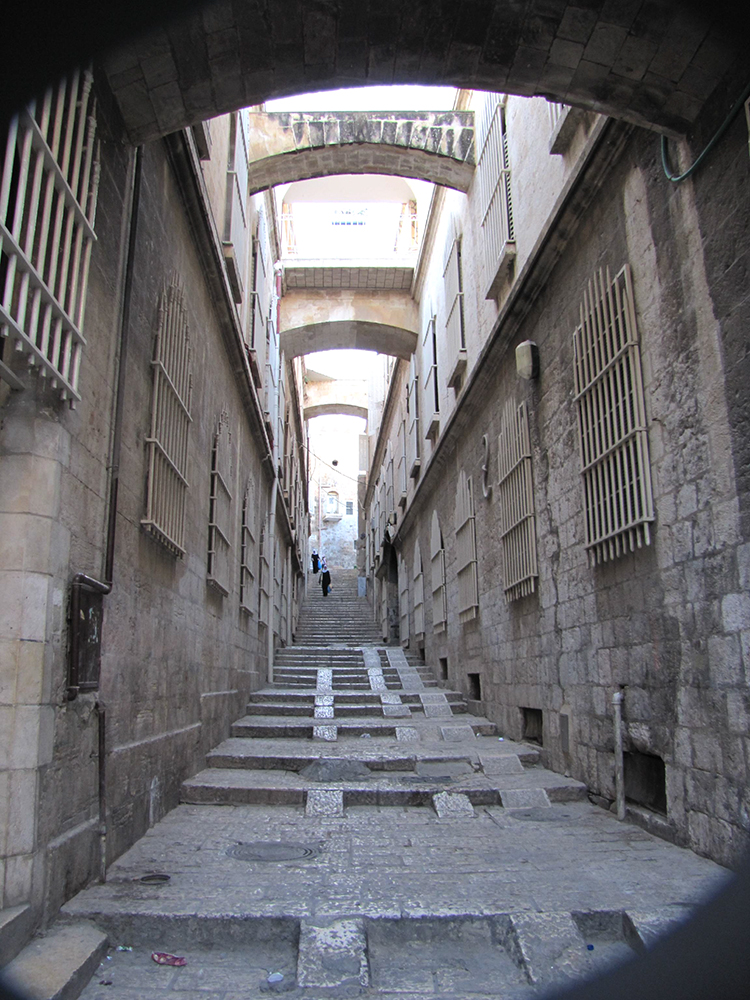
A street in the Old City early in the morning.
Silwan
Silwan is an Arab village of about 45,000 people that sits south and southeast of the Old City on the City of David and to the east of the City of David across the Kidron Valley. The name of the village, “Silwan,” is the Arabic form of the Greek word “siloam” which is from the Hebrew “shiloah.” It occupies the fertile land near the Gihon Springs where King Solomon’s gardens once were. Silwan is built on top of the necropolis, or a cemetery, from the days of the Old Testament. The ancient tombs are used as cisterns, basements, or living quarters by the Arabs in Silwan today.
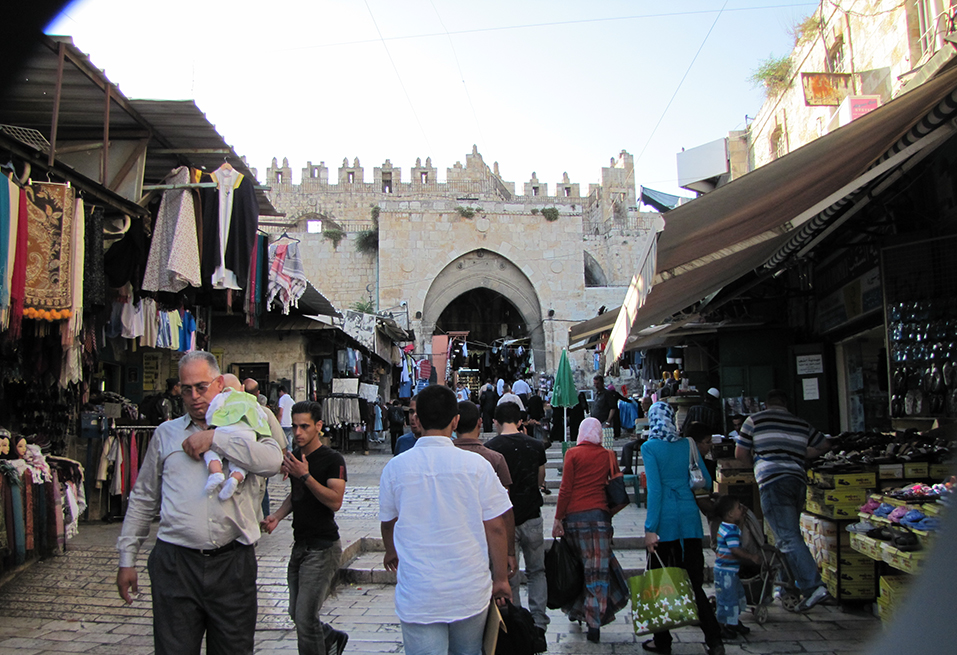
The village of Silwan on the east side of the Kidron Valley as seen from the west side in the City of David.